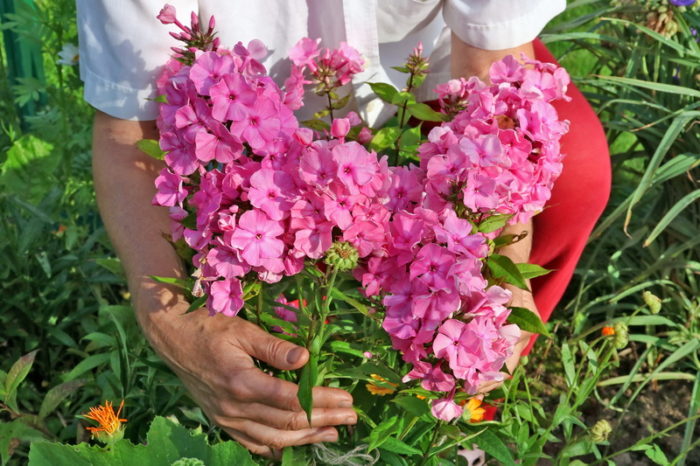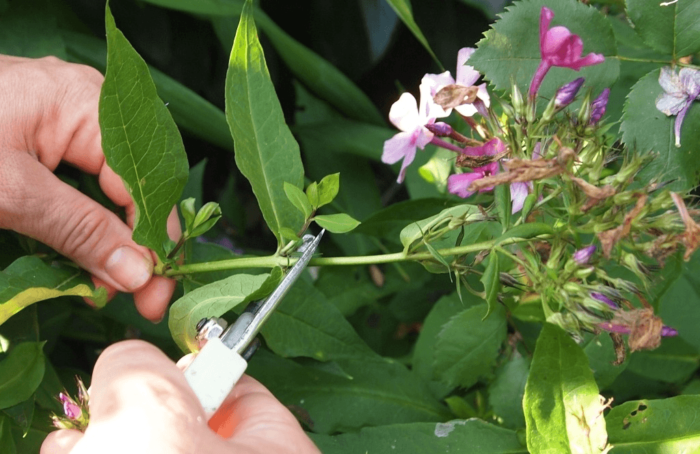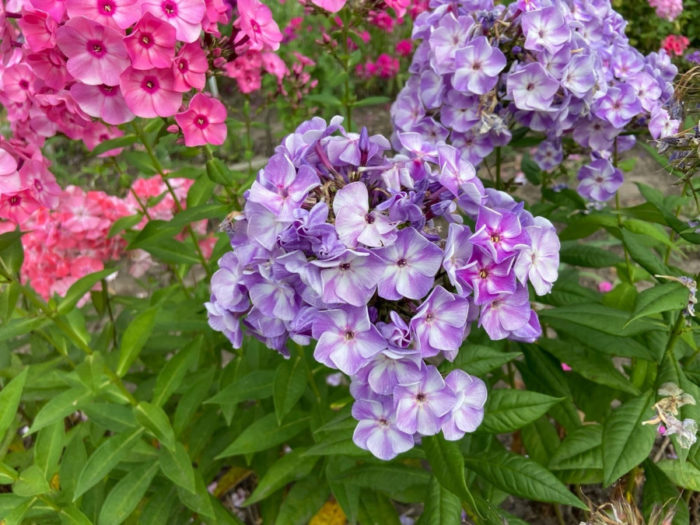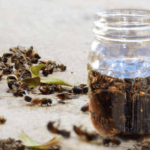Perennial phloxes are often used to decorate summer cottages and flower beds. These flowers differ in shapes and shades. They begin to bloom with the onset of warm spring weather. This process ends in mid-August. Many summer residents have a question: the phloxes have faded - what to do with them next?e? In order for the perennial to remain decorative next year, it is important to provide it with proper care.
Protecting phlox from pests and diseases after flowering
Like other flowering crops, phlox is susceptible to diseases and pests. Preventive spraying makes it easier to combat such problems. Common plant pathologies include the following:
- powdery mildew - characterized by the formation of a gray-white coating on the foliage;
- leaf spotting - when the foliage dries out and turns yellow;
- Septoria blight - this fungus causes brown spots to appear on the lower leaves;
- phomosis - with the development of pathology during flowering, the stem darkens.
At the first signs of pathologies and for preventive purposes, phloxes must be treated with any fungicidal preparations. To do this, it is permissible to use Bordeaux mixture or Fitosporin.
Phlox are also susceptible to attacks by pests, which cause their death. Possible parasites include the following:
- nematodes - cause the destruction of flowering crops;
- slugs - damage young leaves and shoots;
- slobbering frog - causes destruction of leaves during drought.
To avoid the appearance of pests and cope with existing parasites, phlox should be treated with insecticides. These include “Confidor”, “Aktara” and others.
Preventive spraying after flowering should be carried out until the end of September. It is important that the air temperature is at least +18 degrees. Otherwise, individual substances simply will not have an effect.
Nutrients for phlox after flowering
It is recommended to fertilize phlox from the end of August to the first half of September. The time should be chosen so that 2 weeks pass after treatment against parasites and diseases.
Flowers should definitely be fed after flowering and before the onset of winter.However, a significant amount of fertilizing is not necessary. Therefore, it is enough to add nutrients once.
To saturate phlox with nutrients, it is worth using the following compositions:
- Take 1 tablespoon of wood ash or 200 grams of bone meal and add 2 tablespoons of superphosphate. This amount is enough for 1 square meter. The composition should be scattered over moist soil and lightly embedded into the soil.
- Mix 2 tablespoons of superphosphate and potassium sulfate with a bucket of water. The resulting composition needs to be distributed around the bush.
- Take 30 grams of phosphorus-potassium fertilizer and half a bucket of peat chips or compost. The resulting composition must be distributed around the crop.
You can also use ready-made combined substances. They can be produced in different forms:
- Liquid fertilizers – should be applied after watering. This makes it easier to absorb nutrients. It is best to apply the mixture in the evening.
- Dry fertilizers should be used in cloudy weather. In this case, nutrients will reach the roots along with the rain.
Formation of phlox bushes after flowering
Phlox, like other perennial crops, needs to be pruned. This will help prevent parasites or infections. Together with the vegetation, it is possible to get rid of dangerous larvae and pathogens. In regions with a warm climate and little snow, shoots must be pruned at the root.
In cool areas, stems should be 5-7 centimeters in size. At the same time, the stumps hold the snow, which provides additional shelter. Pruning should be done at the end of autumn - before the onset of frost. The timing varies depending on the growing region. Typically this period falls on October 10-30.
Caring for phlox after flowering: watering
After flowering has finished, the plants should continue to be watered. It is important to avoid drying out the soil ball. The soil should be moistened at intervals of 10 days. For 1 square meter of planting it is worth using 2 buckets of water.
Mulching and covering phlox for the winter after flowering
Phlox should be mulched after pruning. This will help prevent rotting of the root system. It is worth using pruning waste as mulch. It is also permissible to use compost, humus and peat. The substance should be distributed under the root system in a layer of 10-12 centimeters. In regions with particularly harsh winters, chopped brushwood or pine branches should be used as insulation for bushes.
The need to cover flowers is due to the fact that part of their roots are located near the very surface of the earth. In harsh conditions, they can simply freeze.
After flowering, phloxes need to be provided with complete and high-quality care. Thanks to this, the plant will delight you with lush and abundant flowering next year.















